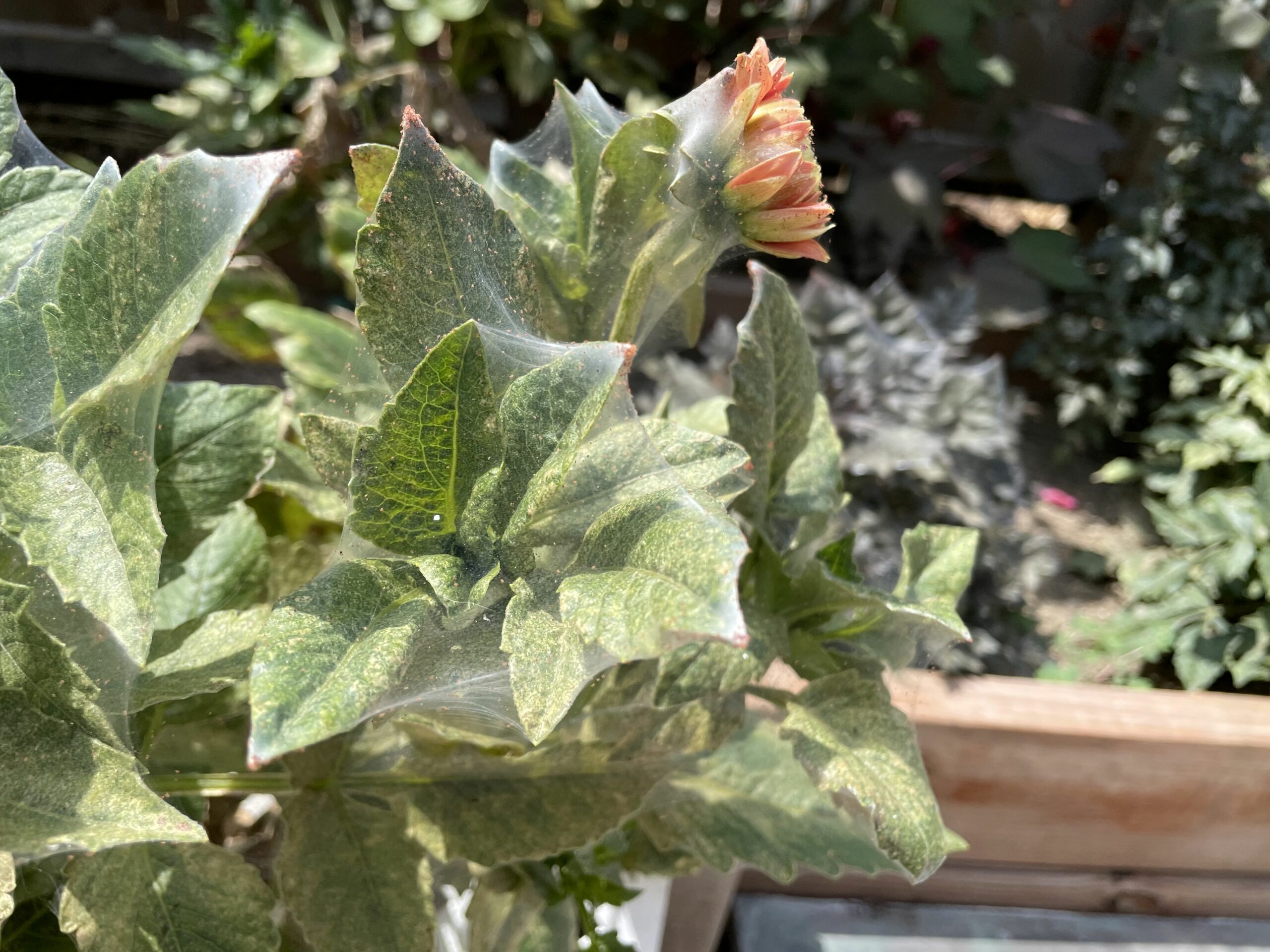Managing spider mites in garden, at home

JACKSONVILLE, Ill. — Spider mites are a common pest on many types of plants. The most commonly encountered species is the two-spotted spider mite. While we often think of them attacking houseplants, particularly during the winter months, they can also be a problem on fruits, vegetables and landscape plants, particularly during hot, dry weather.
What do they look like?
Two-spotted spider mites are small (1/50 inch) and oval-shaped. They can range in color from yellowish or greenish to brown to orange-red, with two dark spots on either side of their body. Because of their small size, they often go unnoticed until plants have significant damage.
What kind of damage do they do?
Spider mites have sucking mouthparts that they will use to puncture plant material to feed on individual plant cells and remove their contents. This causes leaves to have a speckled or mottled appearance. As feeding continues, leaves may begin to yellow or bronze and eventually die. Severely infested plants may become stunted, defoliated, and potentially die.
They also produce webbing, thus their name, which can also indicate their presence. The webbing will be spun on the undersides of infested leaves. As mite populations grow, the webbing can completely cover a plant’s leaves, stems, and flowers. They also use it to move around the plant and spread to nearby plants.
Managing spider mites
While two-spotted spider mites may not be a problem every year outdoors, they can become a problem during hot, dry weather like we have experienced this year in many parts of central Illinois. Spider mites can be difficult to see until populations get large and plants start showing symptoms of their feeding.
If you suspect you have spider mites, closely inspect the undersides of leaves using a magnifying glass. Alternatively, you can use a piece of white paper and shake plant leaves over it. This will cause any mites present to fall on the paper, making them easier to see.
There are several things you can do to manage spider mites:
- Two-spotted spider mites thrive during hot, dry weather and on stressed plants. Making sure
plants are well watered during these conditions can go a long way in preventing outbreaks. - Spider mites are often introduced into landscapes and homes on infested plant material. Inspect
plants before putting them in your landscape or bringing them indoors. Plants can also be
quarantined away from other plants until you are sure no spider mites are present. - Spray infested plants with a forceful spray of water. This will remove the mites, their eggs, and
webbing. You may need to repeat this several times. - Predators such as lacewings, lady beetles, and predatory mites will often keep spider mite
populations in check outdoors. Take steps to conserve predators by providing habitat and
avoiding pesticide use if possible. - Insecticidal soaps and horticultural oils are commonly used to manage spider mites. These
pesticides have no residual activity and must come into contact with the mites to work.
Therefore, when using them, good coverage is important for both the upper and lower sides of
leaves.
Good Growing Fact of the Week: Despite often being lumped in with insects, mites are actually
arachnids, along with spiders, ticks, and daddy longlegs/harvestmen. Like other arachnids, mites have
eight legs and two main body parts compared to insects with six legs and three main body parts.
Miss Clipping Out Stories to Save for Later?
Click the Purchase Story button below to order a print of this story. We will print it for you on matte photo paper to keep forever.

